55 Gallon Drums
55 gallon drums are cylindrical containers used for shipping bulk goods. 55 gallon drums are large, cylindrical industrial containers with a nominal capacity of 55 gallons that are mainly used for shipping and storage applications.
A note on terminology: Drums and barrels are for all practical purposes the same thing. Industrial manufacturers use the two terms synonymously, and there is no distinctive structural difference between "drums" and "barrels;” both can be made of plastic, fiberglass, or metal, both are used to transport goods, and both have standard sizes, such as the 55 gallon drum.
There are only two cases in which a slight distinction is made between drums and barrels. The first is in the oil industry; oil is transported in standard, metal, 42 gallon containers referred to as "oil barrels", not as "drums"; the distinction made between oil "barrels" and drums which transport other material helps clarify volume, which in a standard drum is 55 gallons. The other industry in which a small distinction between drums and barrels is made is in the alcoholic beverage industry, which also refers to its containers as "barrels" and not usually as "drums". Alcoholic beverage industries have traditionally used wooden barrels, and although wooden barrels have largely gone out of use in modern manufacturing, the sanitary-grade stainless steel, containers used to ferment and transport beer, wine and liquor are referred to as wine or beer barrels. A distinction is made with beer and wine "barrels" partially out of a linguistic nostalgia for the industry and partially as a way of verbally clarifying a beer or wine barrel's contents as such. Outside of these two industry-specific slight distinctions, the terms "drums" and "barrels" refer to the same item.
Quick links to 55 Gallon Drums Information
The History of 55 Gallon Drums
Barrels and drums have been around as wine and beer casks since at least the medieval times, as shipping containers for imports and exports to and from English colonies since at 1700, and as containers for whiskey in the United States since the mid to late 1800s. These were made of wood.
Modern 55 gallon drums specifically didn’t come into common usage until the 1900s. In 1905, an employee of Nellie Bly’s Iron Clad Manufacturing Company of New York received two patents that would lead to the steel 55 gallon drum as we know it today. Nellie asked for this invention because the common metal drum type of the day, which was used to transport oil, was leaky and heavy.
Steel 55 gallon drums were also used during World War I and World War II. In WWI, they were used to ship sulfuric acid from the United States to Europe, and in WWII, they were used to ship aviation fuel and, occasionally, to help small vessels float. During and in between both of these conflicts, the 55 gallon steel drum was strengthened and improved upon.
While steel drums are great for shipping products like gasoline, the manufacturers and consumers of the day quickly realized that it is not always so suitable for food. This is because steel drums can rust and contaminate the food inside. So, manufacturers turned to fiber drums. Manufacturers found them to be lightweight, disposable, and not prone to contamination
The 1960s gave rise to the use of HDPE Containers (high density polyethylene), a plastic. Manufacturers found it easier to work with and cheaper than steel, and more durable than fiber. Plus, they realized that plastic works better than steel and just as well as fiber at storing and transporting food grade items. This is because plastic is largely inert and resistant to the acidity present in some foods. It’s also highly durable and repurposable. Today, most food grade drums are made from plastics. Today, steel, fiber, and plastic 55 gallon drums are all still used, just in different capacities.
Applications of 55 Gallon Drums
One of the oldest types of containers, 55 gallon drums are primarily for transporting and storing bulk goods, which are most often liquids.
55 gallon drums cover a wide range of applications in industries such as petroleum, chemical processing, food and beverage, pharmaceutical, hazardous waste collection, waste water treatment and agriculture. Examples of the diverse substances they may contain include gasoline, ice cream, plastisols, carbonated beverages, powders of all kinds, and chemicals.
Advantages of 55 Gallon Drums
55 gallon drums are a great way to send off cargo in bulk because of their great capacity and stackability.
Drums and barrels are also sustainable because they are frequently used more than once. Because they can be repurposed in so many different and creative ways (rain barrels, garden planters, dock floats, trash bins, barriers, etc), 55 gallon plastic drums enjoy a particularly strong reputation as eco-friendly packaging.
55 Gallon Drum Manufacturing and Customization
There are three materials from which drums, or barrels as they are sometimes called, can be made: steel, plastic, or paperboard (often referred to as a fiber drum). The types of steel that manufacturers usually use include carbon steel, stainless steel, and cold-rolled steel. They typically use plastics such as nylon, polystyrene, PVC, and HDPE, plastic barrels. The fiber used for fiber drums is usually fiberboard or dense paper.
- Steel Drum Design
- Manufacturers fabricate steel drums via a combination of roll forming and welding. During roll forming, metal sheets are rolled into ring shapes by the force exerted by roller die pairs placed above and below them. As the sheets are fed through the roll forming machine, the rollers bend them along their linear axis. After the sheets have been rolled into ring shapes, manufacturers weld a base onto one or both ends of the body, depending on the drum’s intended configuration.
- Creating Plastic Drums
- Manufacturers typically make plastic drums through blow molding, a manufacturing method by which hollow products are formed. To start things off, manufacturers melt down plastic and shape it into something called a parison. A parison is a tube-like piece of plastic, designed with a hole at one end, through which compressed air can pass. Then, the blow mold machine pushes a metal ram into the parison, expanding it until it reaches the intended height of the finished product. Using a blow pin, the machine then introduces air pressure through the inside of the parison, forcing it to balloon out and assume the shape of the mold cavity. Finally, manufacturers allow the product to cool. They do this by conduction, cold water running through the mold cavity, or the evaporation of volatile fluids in the container.
- Manufacturing Fiber Drums
- The process of manufacturing fiber drums is the least energy-intensive of all. This is because it requires neither melting nor heating nor welding. Manufacturers usually create fiber drums on a production line that incorporates body makers, ring fixing machines, lid fixing machines, and disc cutting machines.
- Drum Customization
- To provide reinforcement to any of these drum types, manufacturers may weld steel rings around the drum at its base, a quarter of the way from the bottom and a quarter of a way from the top. These reinforcing rings, also referred to as corrugations, strengthen the sides of the barrel and prevent it from denting or puncturing when it is rolled or turned.
- A feature that the plastic drum, steel drum, and fiber drum frequently share is the option of having an open or closed top. Closed tops are usually welded shut for a more secure barrel. This is especially important when shipping hazardous materials.
- You can customize your 55 gallon drum in a number of ways. For example, you may have it custom painted or adorned with labels and designs. You can also opt for custom bung hole placement and/or extra bung holes. Furthermore, you can choose the configuration of your drum cover. The closed head drum, also called a tight head drum, has a permanent lid with a small opening to allow for the pouring out of the material enclosed. The open head drum, on the other hand, features removable heads, or lids.
Features of 55 Gallon Drums
55 gallon drums work quite simply. They hold materials inside themselves. If the drum has a closed top, manufacturers can pour materials into it via a bung hole at the top, which they can stop up with a plug. Open top drum covers, on the other hand, can be lifted. So, manufacturers will add materials to them that way. Either way, the contents are kept inside by the drum lid.
When a manufacturer is ready to ship or store the drums, they can stack them on pallets and move the pallets with a forklift. When someone wants to retrieve what’s inside the drum, they can either unplug the bung hole and pour it out, or lift the lid (which can come all of the way off or be hinged) and pour, scoop or dump it out.
Because they (usually) have reinforced sides, you can also place them on their side and roll them; over short distances, you can tip them and roll them on their bottom lid at an angle.
55 gallon drums are unique among gallon drums because they hold the international standard size. In other words, they hold the exact volume allowed for international trade.
55 Gallon Drum Images, Diagrams and Visual Concepts
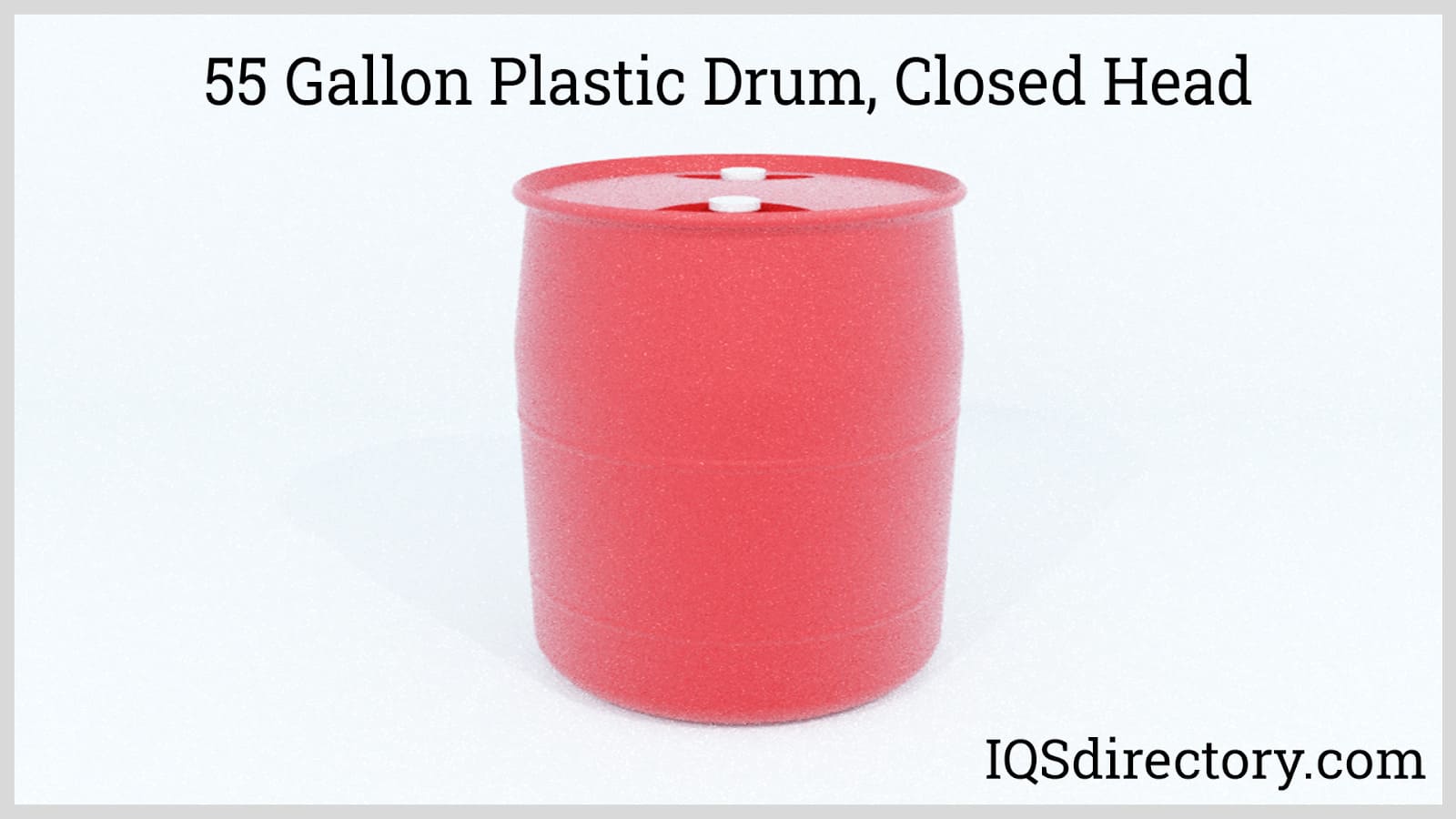 A 55 gallon drum is a cylindrical container made from a variety of materials for shipping large quantities of liquids, chemicals, powders, granule compounds, and food ingredients.
A 55 gallon drum is a cylindrical container made from a variety of materials for shipping large quantities of liquids, chemicals, powders, granule compounds, and food ingredients.
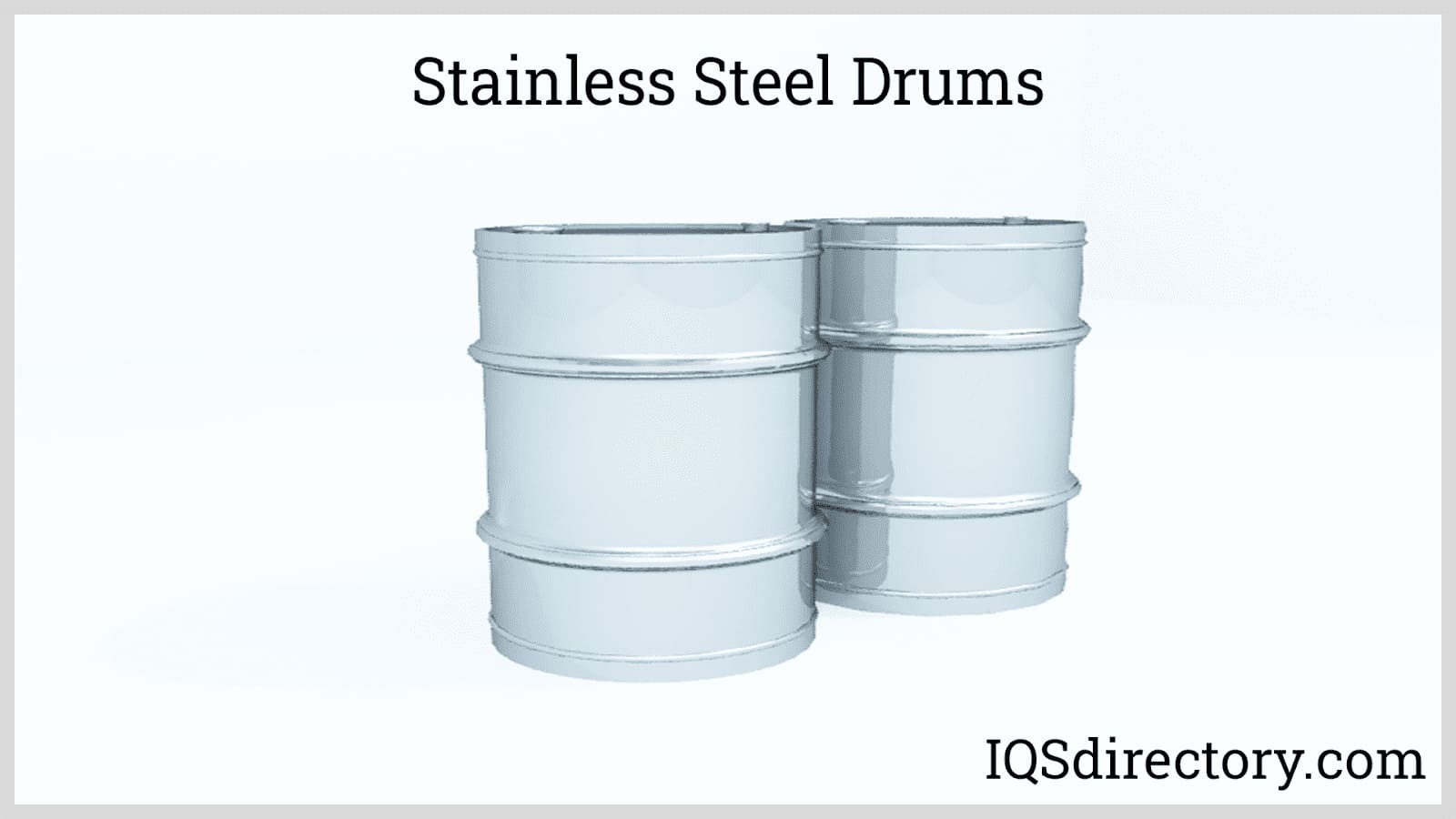 Stainless steel drums have interior linings to protect the contents from contaminants from corrosive or acidic components.
Stainless steel drums have interior linings to protect the contents from contaminants from corrosive or acidic components.
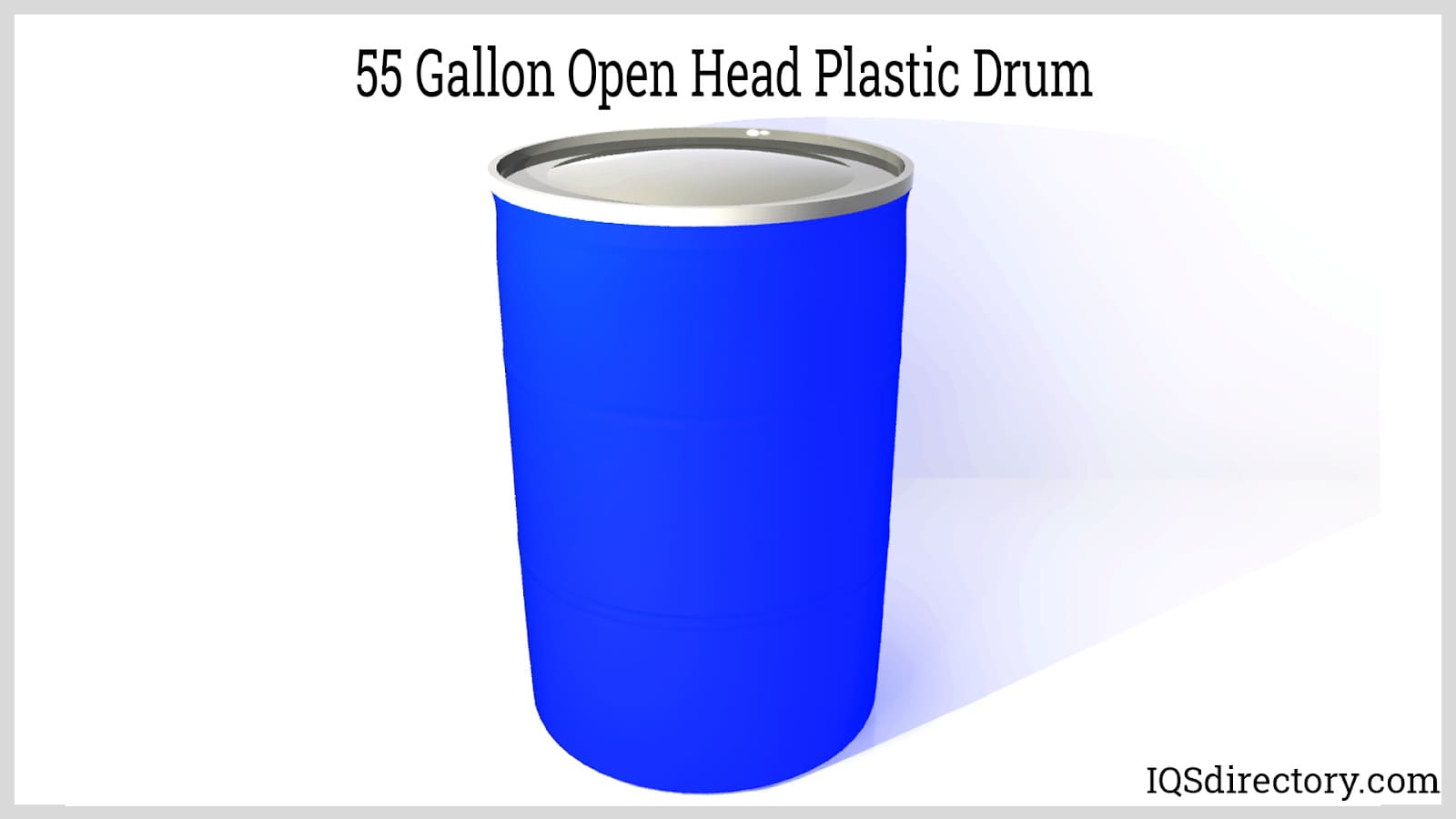 Open head drums are normally used for storage or shipping and designed for harsh conditions to survive the demands of shipping.
Open head drums are normally used for storage or shipping and designed for harsh conditions to survive the demands of shipping.
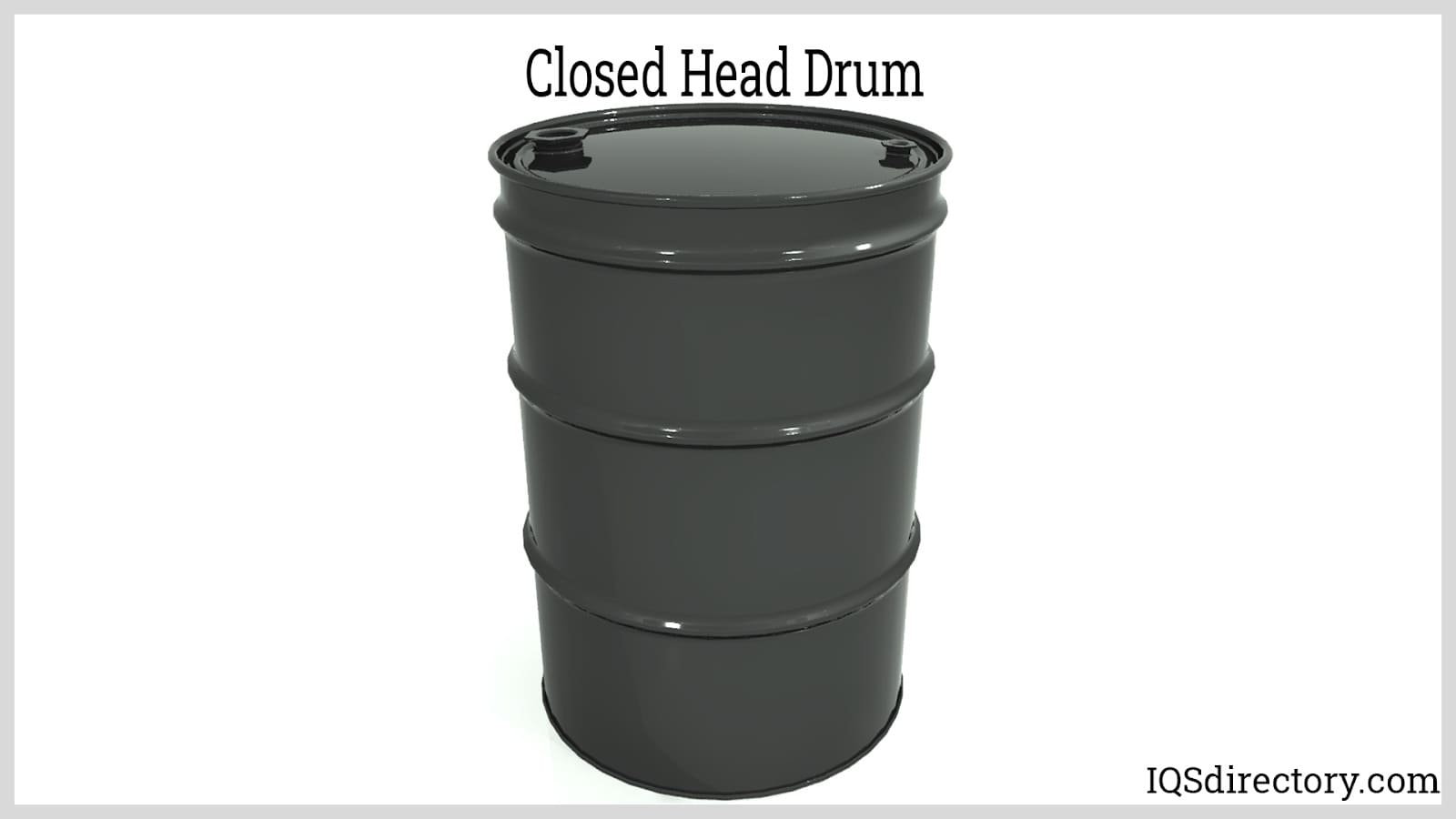 Closed head drums are used for hazardous waste and are tested to meet drop, stack, leak, hydrostatic, and vibration requirements.
Closed head drums are used for hazardous waste and are tested to meet drop, stack, leak, hydrostatic, and vibration requirements.
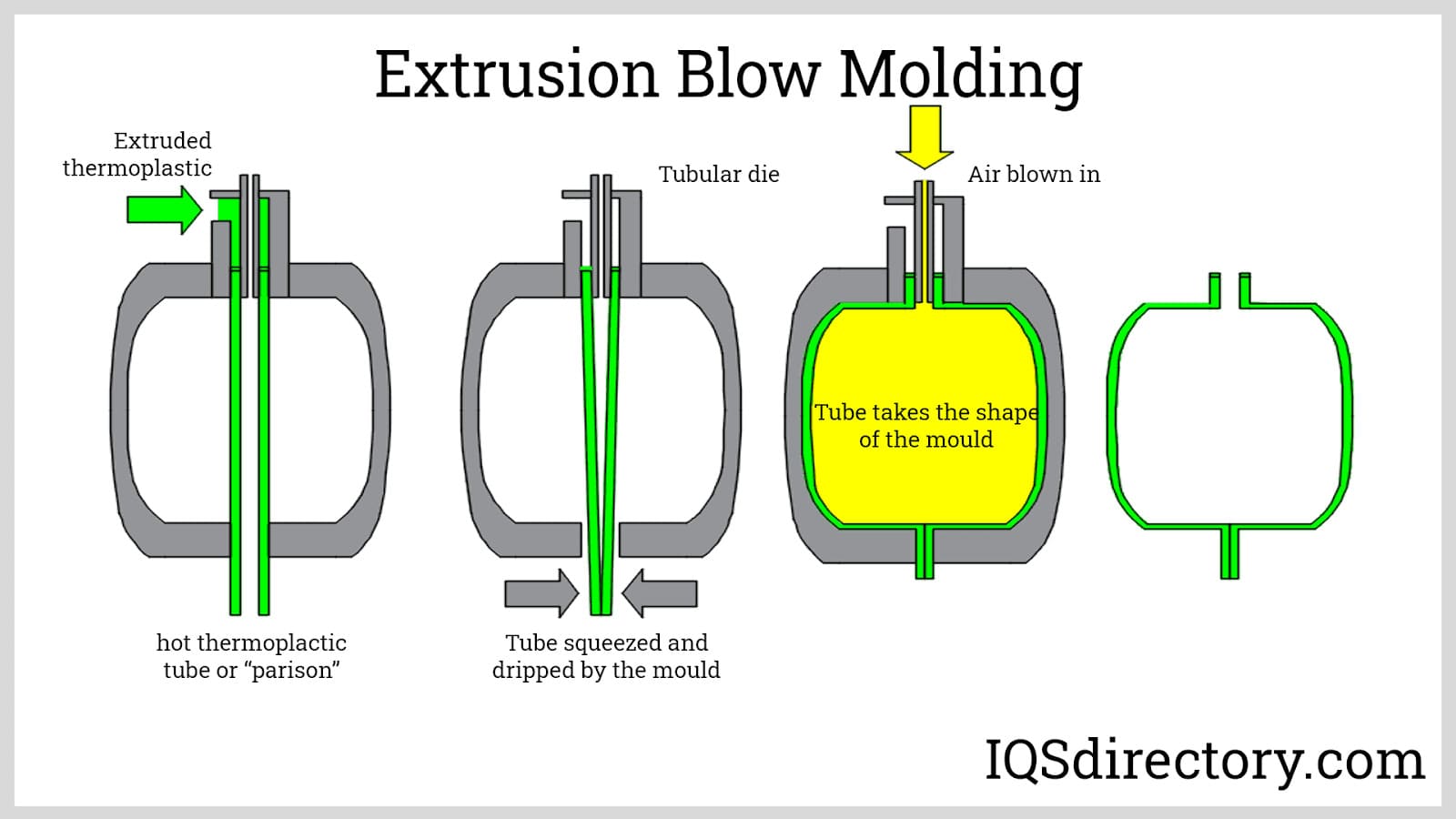 The production of plastic 55 gallon drums involves the usage of plastic blow molding where molten plastic is blown into a die or mold.
The production of plastic 55 gallon drums involves the usage of plastic blow molding where molten plastic is blown into a die or mold.
55 Gallon Drum Types
- Agitator Drums
- Used for the mixing and combining of substances, such as paint and concrete. They have an opening in the cover for the entrance of the blades of an agitator, which mixes the substance, and are made most often with metal alloys, such as steel or aluminum.
- Blue Barrels
- Constructed from plastic materials, the color typically signifying that the barrels are capable of FDA-approved transport or storage.
- Closed Head Drums
- Also called "tight head drums," have a permanent lid with a small opening to allow for the pouring out of the material enclosed.
- Fiber Drums
- Shipping and storage containers made of heavy paperboard materials.
- Hazardous Waste Containers
- Portable devices used to store, transport and in other ways handle waste materials that are harmful to people and/or the environment.
- Industrial Drums
- Large, cylindrical industrial containers that are mainly used for shipping and storage applications.
- Metal Drums
- Large, cylindrical containers formed from metallic materials that are used to store or transport liquids or solids, although liquids are much more common.
- Open Head Drums
- Often use removable heads, as opposed to closed head drums.
- Plastic Barrels
- Used to transport and store liquids.
- Plastic Drums
- Rust-proof alternatives to steel drums.
- Reconditioned Drums
- Plastic or steel vessels that have been reconditioned to ensure optimum repeat use. Most often, the lid of the drum is what is replaced or reconditioned.
- Salvage Drums
- Specifically designed for the safe and economic transport and storage of damaged drums. In the unusual event that a steel drum leaks, possibly due to extreme mechanical loading or impact, temporary solutions, such as salvage drums, may be required.
- Seamless Drums
- Have a smooth, creaseless interior that prevents the unintended trapping of the material being stored. Seamless drums are similar to process drums, which have a welded top curl to prevent entrapment, as well
- Steel Barrels
- Closed-top drums used to ship and store liquids.
- Steel Drums
- Cylindrical corrosion-resistant containers used to transport or store both liquids and solid materials.
- Used Drums and Barrels
- Not only saves money, but it also helps the environment by making use of the "three R's".
- Used 55 Gallon Drums
- Have many uses beyond the landfill. Several of these exist in the arena of lawn, gardening, and agriculture. This is only fitting since, by reusing drums, consumers are contributing to the well-being of the environment. They also have use in recreation and emergency planning.
- Water Barrels
- Collect and store water through ductwork that is fixed to the roofs of buildings such as manufacturing facilities and warehouses.
- 30 Gallon Barrels
- Barrels of medium size, and they have use in many industries, depending on composition.
Uses of 55 Gallon Drums
- Steel Drum Uses
- Often referred to as fuel drums, steel drums are most commonly used for pharmaceuticals, fragrances, flammable chemicals, and other hazardous substances. Stainless steel drums, in particular, are used in anti-corrosive and sanitary applications. In addition to 55 gallon, 30 gallon steel drums are also available for non-bulk applications, often used with food products. However, steel barrels can rust when exposed to the elements, causing many companies to prefer non-rusting plastic drums.
- Plastic Drum Uses
- Extremely strong and rigid, yet light-weight, plastic drums are often called blue barrels because they are typically blue in color. Plastic drums are often used to transport and store acidic and caustic liquids, powders, or other materials. Plastic barrels are ideal for liquid and low viscosity foods, solids and high viscous materials, lubricating oils, and chemicals.
- Fiber Drum Uses
- Fiber drums are a low-cost alternative to steel drums. The most common application for fiber drums is the transportation of food products, including frozen or refrigerated goods such as cheese and ice cream. However, fiber drums are ideal for shipping or storing dry or solid materials, and are completely incinerable and stackable, as well as being the most easily recycled type of drum.
- There are also many different types of 55 gallon storage containers that fit within the three main drum categories, such as water barrels, hazardous waste containers, and used drums.
- Other Uses for 55 Gallon Drums
- Water barrels mainly collect and store water through ductwork that is fixed to rooftops of industrial buildings. However, they are also often used as rain barrels, which specifically collect and store rainwater runoff. The water barrel and rain barrel are both most often made from plastic.
- Hazardous waste containers is a broad term for a wide range of industrial containers, including chemical drums, salvage drums, 55 gallon steel drums and 55 gallon plastic drums, that are used to store hazardous waste. Defined as any chemical waste that is not otherwise approved for trash or drain disposal, hazardous waste drums store hazardous waste materials including nitric oxide, aerosol cans, caustics, ceramic glazes, fertilizers, grease, disinfectants, and gasoline.
- Used drums, also called reconditioned drums, can include used steel drums, used fiber drums and used plastic drums. An environmentally relevant activity, the reconditioning process consists of flushing out and stripping the drum for continued use. Reconditioning is one of the safest methods of removing hazardous waste from used barrels.
Accessories for Drums
In addition to the different types of industrial drums, 55 gallon drums have many drum accessories, one of which is the drum pump. A drum pump is a pneumatic pump that fits through a standard opening at the top of the drum. Consider investing in this accessory if your application involves transferring plastisols from industrial drums to dip molding tank reservoirs.
If your application involves mixing concrete or any other substance, consider getting a drum mixer. Drum mixers are an accessory usually used to mix concrete inside a revolving drum.
Another great accessory that everyone should have is the drum dolly. Drum dollies are a type of drum handler, used to move drums around a work site. They are equipped with wheels, so that you can transport them easily. Many also come with locking drum straps.
55 Gallon Drum Standards and Specifications
In general, users of 55 gallon drums must make sure that their drums and the contents of their drums match all standards set out by local, state and national authorities, as well as the industry within which they work.
For example, steel drums intended for use in defense must meet the standards put forth by Mil Spec, or military specifications. Likewise, drums and materials inside drums crossing international borders must meet United Nations (UN) regulation standards.
Also, most steel drums used in industrial manufacturing must meet not only UN regulation standards but the US Department of Transportation (DOT) regulation standards as well. DOT breaks substances down into nine different divisions, each with subclassifications of their own; drums containing any of these must be clearly adorned with labels reflecting the classification of their contents. The nine main divisions established by DOT are as follows: Class 1: Explosives, Class 2: Gases, Class 3: Flammable Liquid/Combustible Liquid, Class 4: Solids, Class 5: Oxidizers and Peroxides, Class 6: Toxic and Infectious, Class 7: Radioactive, Class 8: Corrosive and Class 9: Miscellaneous.
Things to Consider When Purchasing a Drum
To decide what type of 55 gallon drum is best for your application, start by asking yourself the following questions: Is your product a liquid or a solid? Is your product considered a hazardous material? Is your product a food grade product? How heavy is your product (gallons/liters for liquid, and lbs/kg for solids)? The answers to these questions will help you decide if you need a steel, plastic or fiber drum.
Once you’ve figured out the type of drum you need, reach out to a manufacturer. Find an experienced and knowledgeable manufacturer by browsing the list posted near the top of this page. When searching and reaching out, keep in mind the qualities of the manufacturer you want. The right manufacturer will not only be able to provide a solution to your application, but they will care about the solution to your application. They’ll put you at ease and put your needs above the bottom line. So, check out our list and find your match today!
55 Gallon Drum Terms
- Barrel
- A unit of volume generally ranging from 31 to 42 gallons, depending upon the standard of the industry in which the barrel is used. For example, in the oil and gas industry, one barrel equals 42 gallons; a barrel of beer, however, equals 31 gallons.
- Bulk Tanks
- Large storage containers, particularly those with capacities greater than 2,000 gallons.
- Capacity
- The amount of space provided inside a container such as a steel drum or plastic drum, for a specific amount of product.
- Closure
- A mechanism on the opening of a container such as a steel drum or plastic drum, used to protect container contents and prevent leakage.
- Cocking
- The incorrect application of a closure of a container such as a steel drum or plastic drum, which may result in content leakage.
- Dome
- A closure of a container such as a steel drum or plastic drum, that has a rounded top surface.
- Gasket
- A protective seal made of a thin, soft substance, such as cork, that provides extra protection against container spillage.
- Hazardous Material
- A substance designated by the EPA or OSHA as posing a health threat due to toxic, radioactive, or corrosive properties. The storage, transportation and distribution of such substances is strictly regulated to ensure safety.
- Hazardous Waste
- A material unsuitable for recycling and reuse. Because these substances pose health threats, strict guidelines exist for proper disposal.
- Impact Resistance
- The susceptibility of plastics to break due to shock.
- Lining
- A protective coating applied to steel drums and plastic drums interiors. Possible coatings include polyethylene (PE), polyester and silicone.
- Overseal
- An extra closure, commonly made of foil or aluminum, that tamper-proofs the primary closure on steel drums and plastic drums.
- Reconditioning
- Processing steel drums and plastic drums for future reuse. Reconditioning may include cleaning and rinsing of the steel drums or plastic drums interiors and exteriors, abrasive cleaning and painting.
- Removal Torque
- The torque force required to unscrew a closure from a container, measured in pounds per inch.
- Spout Cap
- A device designed to cover the spout from which the pouring of the elements takes place on the lid or cover of steel drums or plastic drums.
- Seam
- The joining point of two edges of a material to create a whole.
- Tight Head Container
- Steel drums or Plastic drums configuration in which the steel drums or plastic drums lids remain attached to the body of the steel drums or plastic drums and cannot be removed.